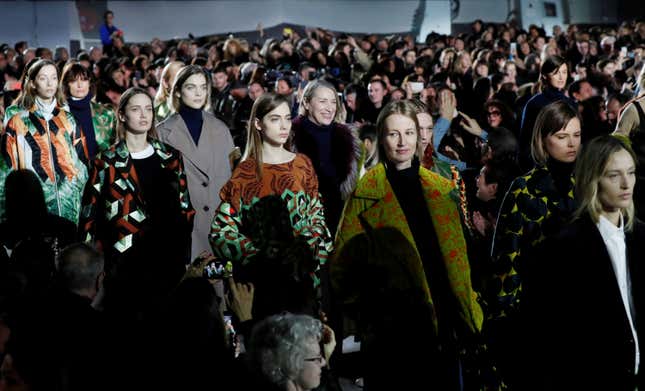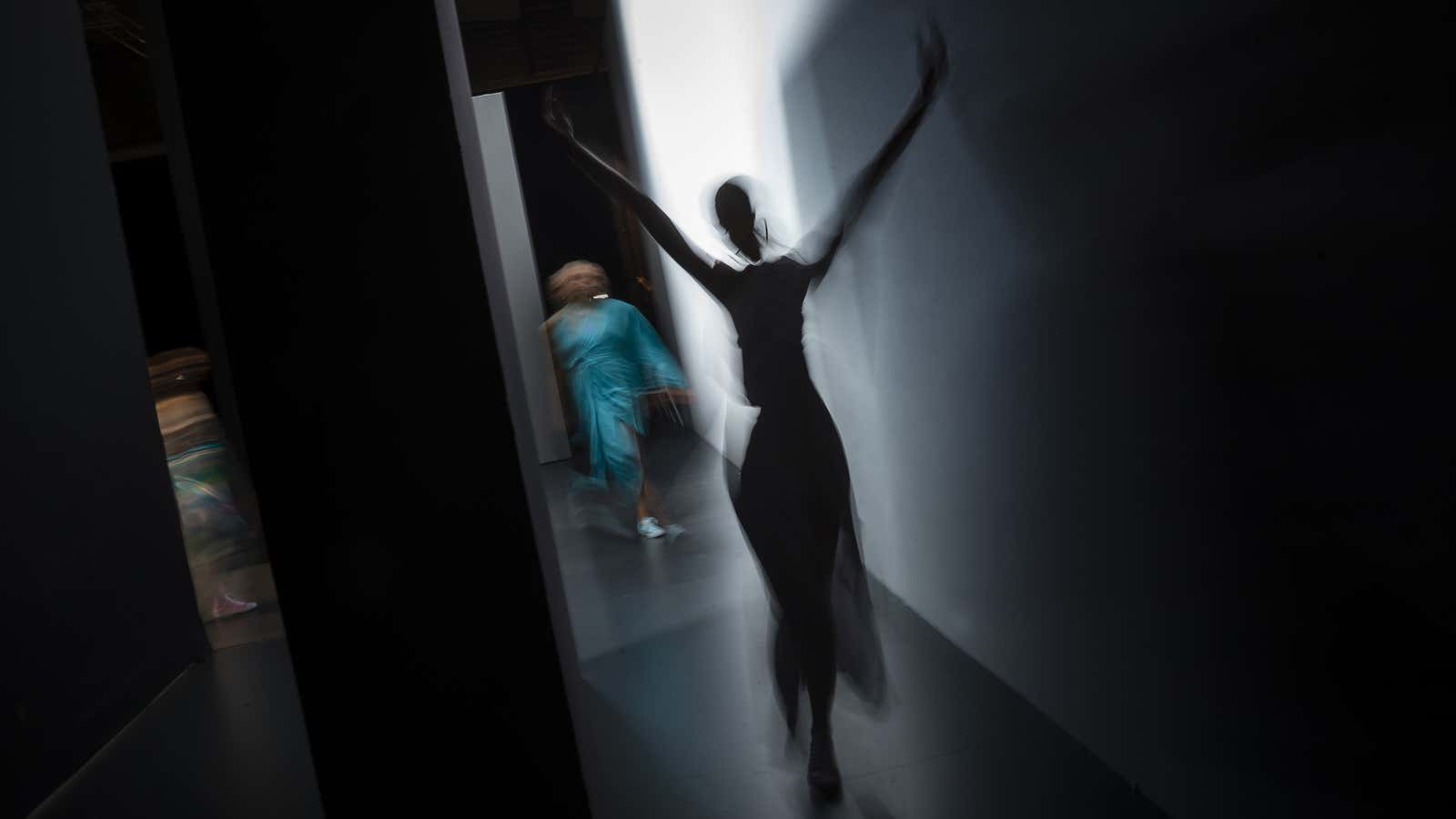Dries Van Noten is one of fashion’s most respected and successful designers. Widely admired by editors, store buyers, and customers alike—and the subject of a forthcoming documentary—he has been in business for 30 years, and has remained fiercely independent despite multiple acquisition offers. In Paris on Wednesday (March 1), Van Noten put on his 100th show, a milestone that few in the industry achieve.
That kind of longevity makes Van Noten an authority on fashion and the financial pressures driving it, two topics about which he spoke candidly in a recent interview with Bon magazine. To describe the industry today, Van Noten, who is Belgian and based in Antwerp, used the Flemish phrase “panic football.”
It’s when you’re playing football, and you panic because you’re behind the other team, and you’re so desperate for a goal that everyone is kicking the ball and it’s going in all different directions. That expresses quite well the state of fashion for me. People are running around on the field without really knowing what direction they have to push the ball. I don’t like that as a feeling. It means that decisions are not taken in a conceptual way. The way of thinking is just: Let’s cut costs, let’s cut budgets.
Fashion’s panic football plays out in a few ways. Some brands churn out products for quick, social-media fueled sales, or over-emphasize categories such as handbags to prop up their numbers. Others try to make their products available immediately after their runway shows, even if doing requires reworking their supply chains for a limited payoff.

The long-term effects of that short-term thinking can be harsh. Both Michael Kors and Coach, for example, spent years chasing sales by discounting their goods, or allowing department stores to do it. The strategy eventually started to devalue their brands, and both companies have had to cut down on promotions and pull back from department stores to get back on track.

Van Noten also noted the degree to which designers today are focused on what sells best through a smartphone screen. “All the colors have to be a little brighter,” he says, “and if you do a motif on the back of a bomber, you have to also do a small motif on the front, because otherwise people are not interested. It’s only when they see a small motif on the front that they also click on it to see the back of it! And you can’t do a small motif because it starts to make waves on screens.”
He acknowledged brands’ need to consider their digital presence, but said they should do it in a way that makes sense for their concept and business.
Fashion is far from the only rapidly changing industry, and designers aren’t the only ones scrambling to keep up while staying true to the core of their brands. “Panic football” applies to any number of businesses, and knowing what your brand is about is the key to avoiding its trap. After all, it got Dries Van Noten all the way to show 100.
